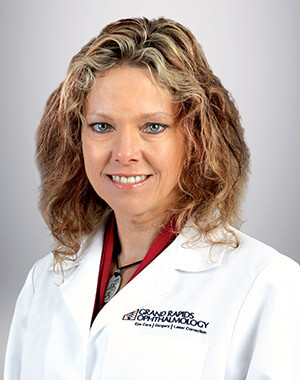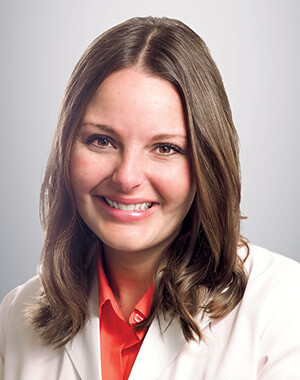 The most important goal of pediatric eye care is the early recognition and treatment of a problem. Experts are all in agreement that the earlier a child’s eyes are aligned (straight) and good equal vision is established, the better the prognosis for the development of good binocular vision with good stereopsis, fusion and depth perception.
The most important goal of pediatric eye care is the early recognition and treatment of a problem. Experts are all in agreement that the earlier a child’s eyes are aligned (straight) and good equal vision is established, the better the prognosis for the development of good binocular vision with good stereopsis, fusion and depth perception.
It is normal for newborn infants to have some variability of the alignment of their eyes. However, it is not normal for that misalignment to be constant or last longer than 3 months of age. If a child’s eyes are misaligned longer than 3 months of age or the misalignment is constant, the child needs to have a complete dilated exam by a pediatric eye care specialist as soon as possible.
If a child’s eyes are constantly or frequently misaligned, the child may have “strabismus: (struh-biz-mus). Strabismus is a misalignment caused by an extra ocular muscle imbalance. The deviation is present even when both eyes are covered.
A child with eyes crossed (turning in toward the nose) has “esotropia” (ee-soh-TROH-pee-uh). This deviation is present with both eyes uncovered. A child with an eye that drifts outward toward the ear (away from the nose) has “exotropia” (eks-oh-TROH-pee-uh). If the deviated eye drifts upward the child has “hypertropia” (hy-per-TROH-pee-uh).
A child with strabismus is at a greater risk to develop “Amblyopia” (am-blee-oh-pee-uh). If left untreated, the eye with amblyopia could develop permanent vision loss or blindness.
At this time the best treatment for amblyopia is occlusion therapy or patching the better seeing eye which forces the poorer seeing eye to work. This treatment must be carefully monitored by a pediatric eye care professional. Excessive, unmonitored occlusion of the better seeing eye could lead to vision loss in that eye. However, patching is a safe and effective treatment of amblyopia if done under the care and supervision of a pediatric eye care professional.
Treating Amblyopia
Treating Strabismus
Esotropia is a misalignment of the eyes associated with crossing inward of one eye or both eyes. If the onset of crossing is prior to or at 6 months, it may be infantile or congenital crossing. This is generally an extra ocular muscle problem and surgery may be required to correct the crossing. Amblyopia; if present, must be treated prior to surgery to correct the esotropia. Infantile or congenital esotropia is usually associated with a large angle of crossing, a small amount of refractive error (no need for glasses), amblyopia and nystagmus (involuntary, rhythmic side-to-side or up and down eye movements).
Esotropia that appears to have an intermittent onset or appears after age 6 months is acquired esotropia. This may be affected by glasses. If acquired esotropia is accompanied by a high or significant amount of hyperopia (farsightedness), the hyperopic correction must be prescribed. If the esotropia is controlled by wearing the spectacle correction, the child has accommodative esotropia. This is a focusing problem, not a muscle problem and the treatment is glasses. As long as the glasses correct the esotropia, no surgery is necessary. However, if a significant amount of esotropia remains even with the spectacles in place, the child may have mixed mechanism acquired esotropia and a combination of spectacles and surgery may be necessary to correct the esotropia. The child must be followed by a pediatric eye care specialist and frequent dilated eye exams must be done to best diagnose and treat the child with esotropia.
If a child with strabismus is evaluated and treated successfully by a pediatric eye care specialist prior to age 10, the prognosis for that child to develop good, equal vision in both eyes, straight eyes and some stereopsis or depth perception is very good.
Early Diagnosis
It is possible to have amblyopia and not have any signs or symptoms. This is due to an internal problem such as an unequal refractive error (one eye more far or nearsighted than the other); or a congenital or infantile cataract or retinal problem. As a rule, children are not aware that they have one poorer seeing eye and one better seeing eye.
Hopefully this unequal vision will be picked up at a pediatrician vision screening or a pre-school screening at the health department. If one sibling or family member has amblyopia in one eye there is a possibility that other siblings will also have it.
Parents can play games with their children to help them judge if there is decreased vision present in one eye.
- One-eye “peek-a-boo”: Instead of covering both eyes when playing peek-a-boo, cover one eye. Watch the child’s reaction. Does she strongly object to the covering of one eye as compared to the other eye.
- “I Spy”: Cover one eye (parent and child) and pick out a small target in the far distance. Can the child see the target? Can the child tell you details about that target with one eye covered? Now cover the other eye. Can that eye see the details of that target?
- Hold a cheerio on the palm of one hand. Cover the child’s eye. Can the child see and pick up the cheerio?
- As you are driving down the road, ask the child to cover one eye and pick out the letters on a distant road sign. Can the child see as well as the parent can see with his/her better seeing eye? The child should be able to see equally as well with both eyes.
- Any concerns regarding the sight of either eye should be referred immediately to the child’s pediatrician or a pediatric eye care specialist.
Pediatrics
Grand Rapids Ophthalmology has two pediatric specialists, including fellowship trained pediatric ophthalmologist, Laura Piippo, and optometrist Abby Veldkamp.
The pediatric team is very sensitive to your concerns as a parent, and has vast experience with children. They and their staff understand that you want the very best for your child and you may be nervous about their vision diagnosis. They will make sure that everyone understands the specific diagnosis and treatment options. In addition, if your child needs corrective lenses, our staff is able to offer the best options for your family with highly trained staff and resources.
Schedule an Appointment
Schedule an appointment today to experience the GRO difference. Call 616.588.6598 or click here.























